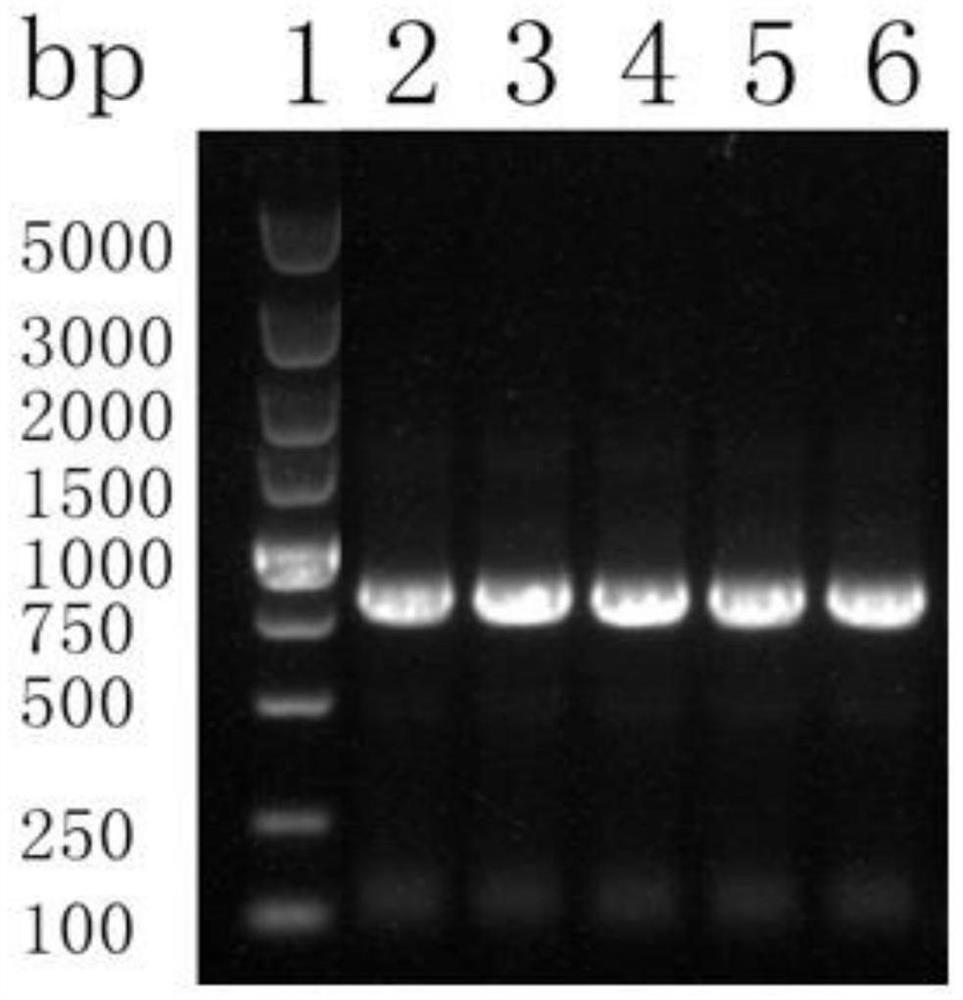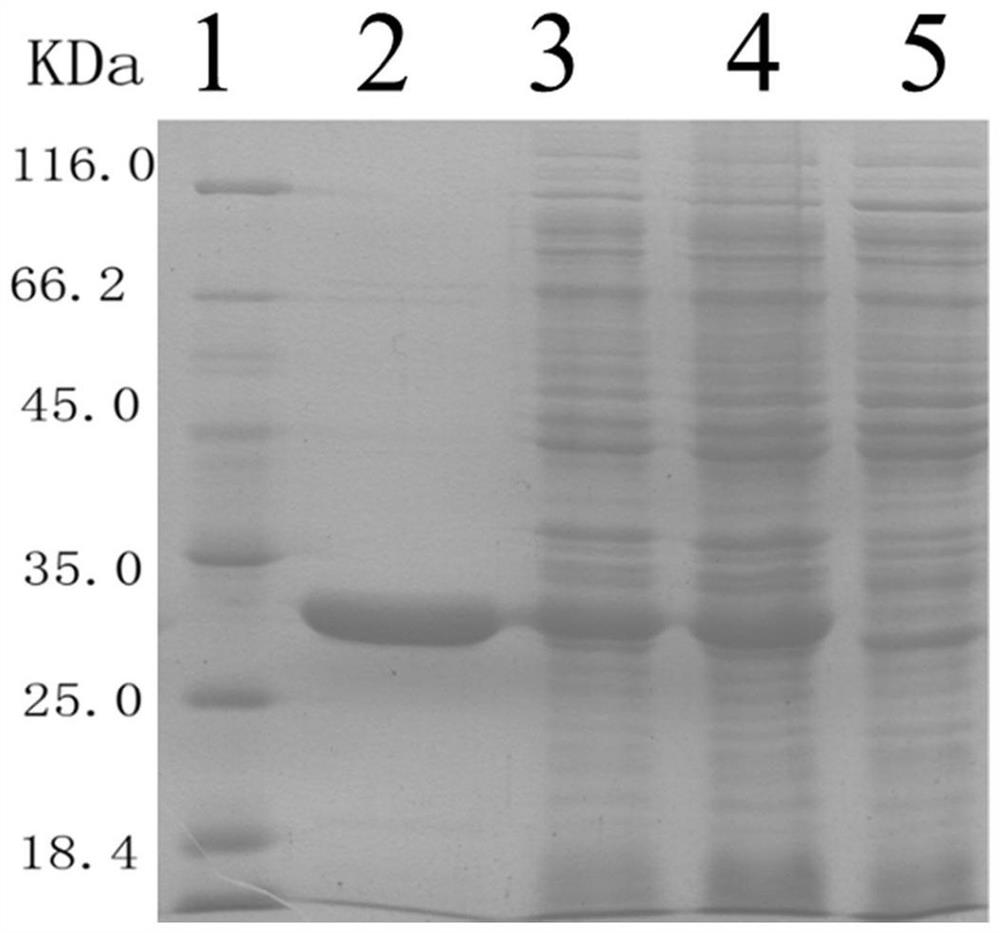Short-chain dehydrogenase BLSDR1 as well as coding gene and application thereof
A short-chain dehydrogenase, gene technology, applied in the application, genetic engineering, plant genetic improvement and other directions, can solve the problems of volatility and toxicity, respiratory system toxicity and other issues
- Summary
- Abstract
- Description
- Claims
- Application Information
AI Technical Summary
Problems solved by technology
Method used
Image
Examples
Embodiment 1
[0022] Example 1: Acquisition of Bacillus coagulans NL01 short-chain dehydrogenase gene, construction of recombinant plasmid and transformation of Escherichia coli.
[0023] The genomic DNA of Bacillus coagulans NL01 was prepared by a conventional method. For this process, the genomic DNA of Bacillus coagulans NL01 can be extracted by referring to the instructions of the Takara MiniBEST Universal Genomic DNA Extraction Kit Ver.5.0.
[0024] Design primers and introduce restriction sites that can be inserted into BamHI and HindIII of plasmid pETDuet-1. The designed primer sequences of blsdr1 are as follows:
[0025] Upstream primer 5'-GGCCTTGGATCCGatgcaaacatttgatttcacaggaaaagttgcaatcgtaa-3' (Bam HI)
[0026] Downstream primer 5'-AATTTTTAAAAGCTTttaggaaaggactgccccgccatcaatgacaaccg-3'(HindIII)
[0027] Using the extracted genome of Bacillus coagulans NL01 as a template, the above primers were used for amplification, and the short-chain dehydrogenase gene sequence blsdr1 was obtai...
Embodiment 2
[0030] Example 2: Induced expression of recombinant short-chain dehydrogenase.
Embodiment 1
[0031] The engineered bacteria E.coli BL21(DE3) / pETDuet-blsdr1 constructed in Example 1 was inoculated into LB liquid medium containing 50ug / mL ampicillin, cultivated overnight at 37°C, and then inoculated with 1% inoculum size (v / v) Into 50mL LB medium containing 50ug / mL ampicillin, culture at 37°C, 200rpm to cell concentration OD 600 To about 0.6-0.8, add IPTG with a final concentration of 1mM, induce culture at 37°C for 5h, then centrifuge at 8000rpm at 4°C for 5min to collect the cells, and store them at -20°C for later use.
PUM
 Login to View More
Login to View More Abstract
Description
Claims
Application Information
 Login to View More
Login to View More - R&D
- Intellectual Property
- Life Sciences
- Materials
- Tech Scout
- Unparalleled Data Quality
- Higher Quality Content
- 60% Fewer Hallucinations
Browse by: Latest US Patents, China's latest patents, Technical Efficacy Thesaurus, Application Domain, Technology Topic, Popular Technical Reports.
© 2025 PatSnap. All rights reserved.Legal|Privacy policy|Modern Slavery Act Transparency Statement|Sitemap|About US| Contact US: help@patsnap.com



